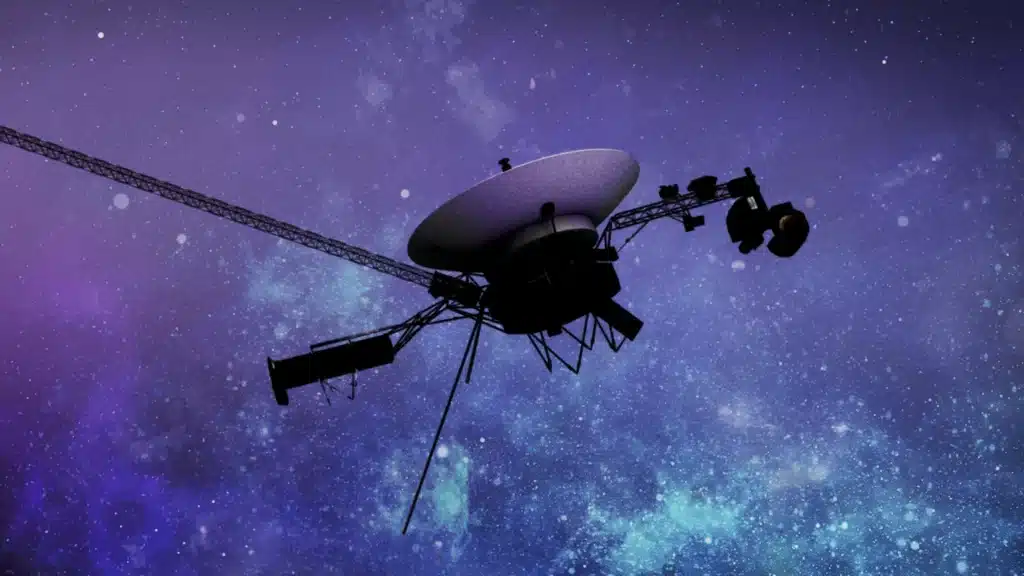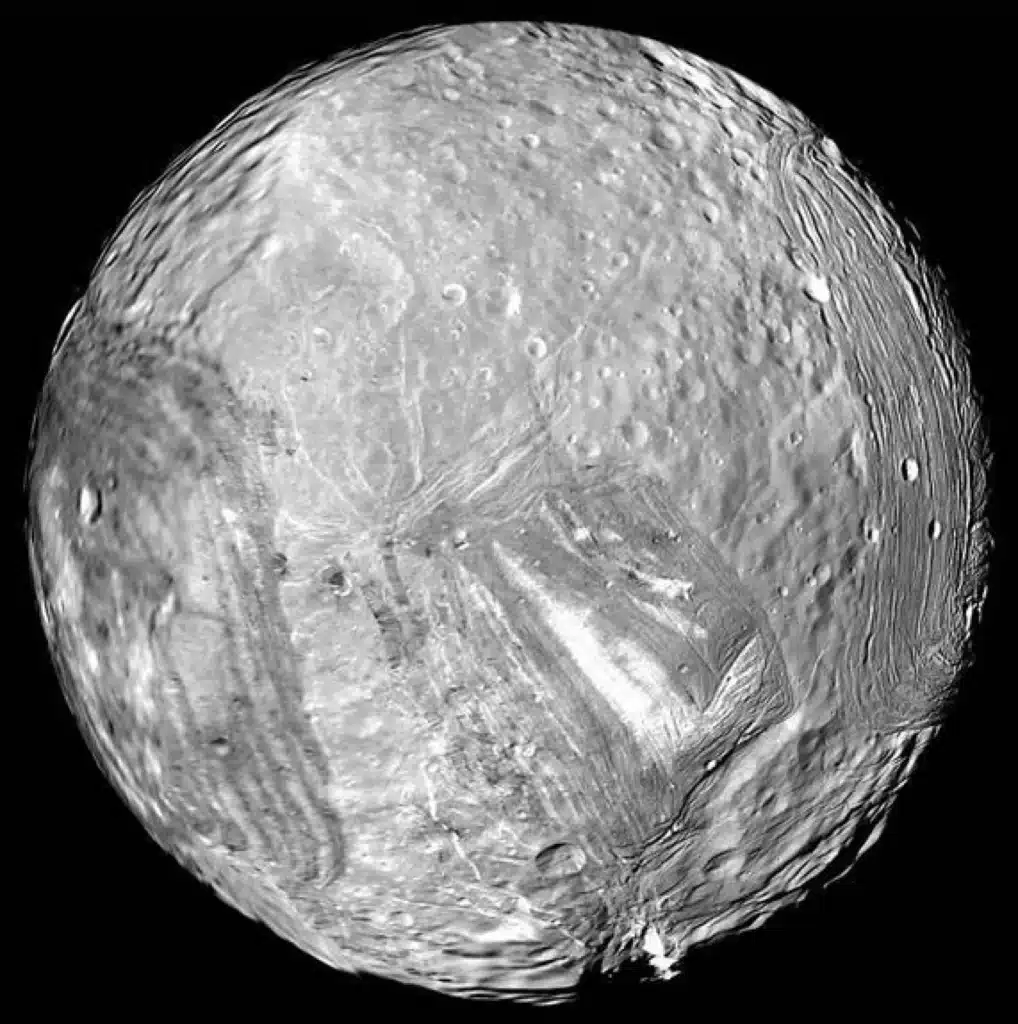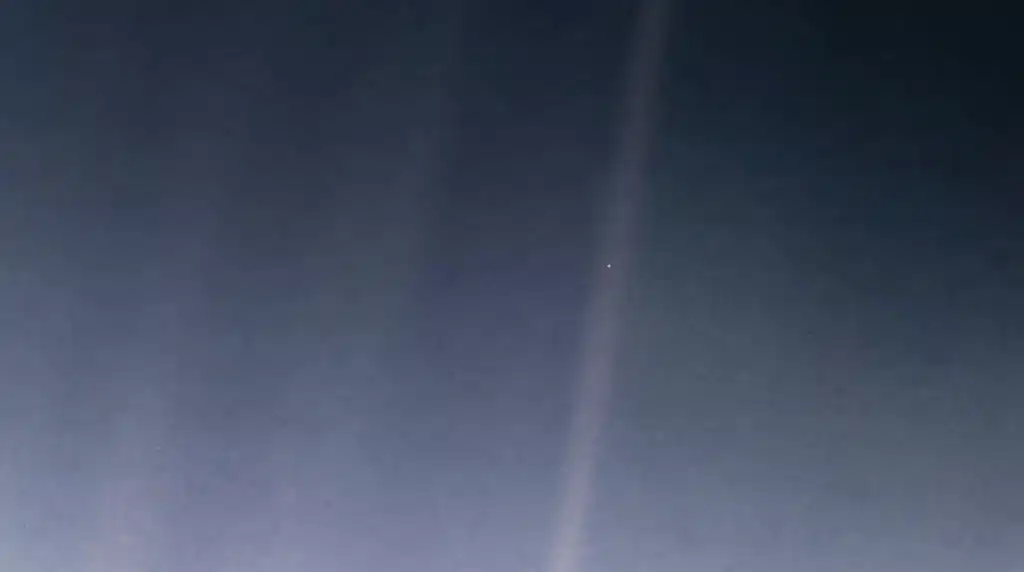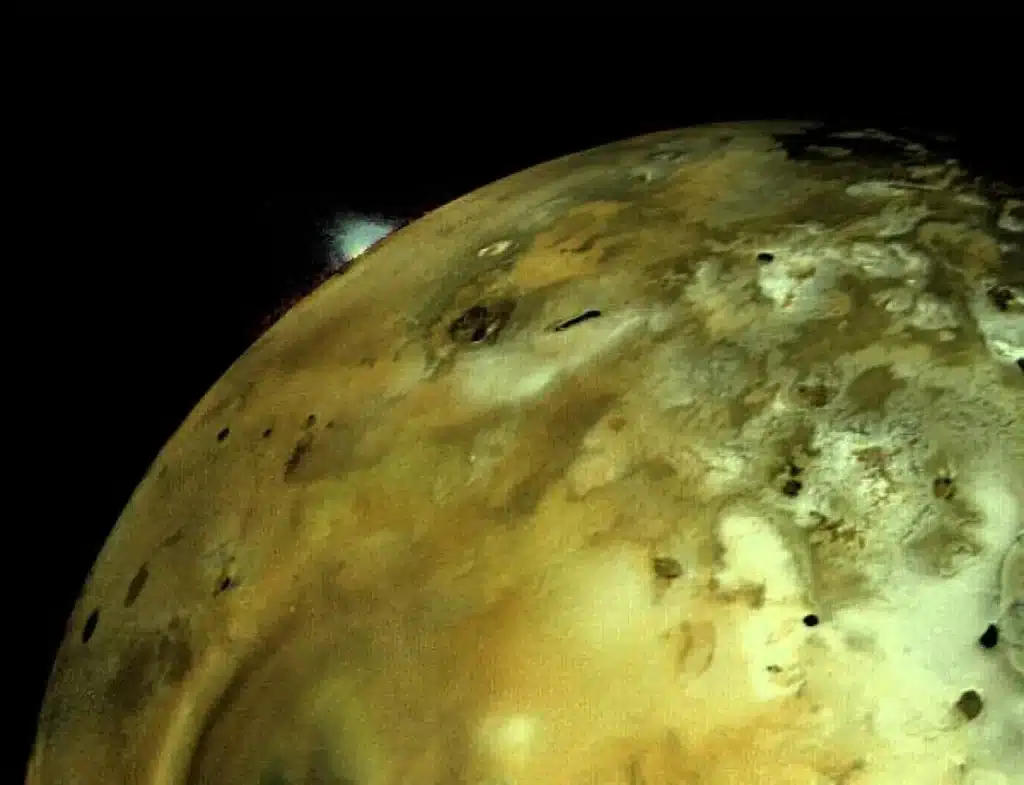NASA scientist who viewed first voyager images saw something that gave him ‘chills’
- The Voyager spacecraft was the first to beam back images from Jupiter’s moon Io
- The NASA scientist who was first saw them said it gave him the “chills”
- They were so unbelievable he thought it was a “prank”
Published on Mar 19, 2024 at 9:22 PM (UTC+4)
by Amelia Jean Hershman-Jones
Last updated on Mar 21, 2024 at 7:11 PM (UTC+4)
Edited by
Kate Bain
When the Voyager spacecraft first beamed back images from Jupiter’s moon Io, the NASA scientist who was first to view them said they gave him “chills”.
It was billions of miles beyond Earth – and it changed everything.
Alan Cummings was the NASA scientist on the project – and what what he saw in 1979 stayed with him ever since.
READ MORE! Falcon 9 lights up sky ahead of returning to Earth and it’s the most magical sight ever
NASA Jet Propulsion Laboratory is managed by Caltech research university in Pasadena, California, US.
There, cosmic-ray physicist, Cummings, saw a never-before-seen lunar landscape moon teeming with volcanoes flowing with lava.
I thought the Caltech students had pulled a prank,” Cummings said per Mashable.
“But no, it was real.”
Jupiter’s moon Io, unlike our barren moon, is the most volcanic place in our solar system – volcanoes can be seen erupting in one image.
“It gives me chills, even just now,” admitted.
The two Voyager craft, both launched in 1977, and were built to last five years.
They’ve now been working in space for almost 50 years despite a couple of glitches, which were quickly repaired.
They’re 15 and 12 billion miles away respectively.
“These are the only spacecraft that have been there,” Cummings said.
However the latest glitch for the ageing spacecraft could be the end for the long mission.
Back in December, NASA reported a problem with the flight data system that its engineers are still trying to remedy.
They can send messages to Voyager 1, but “no science or engineering data is being sent back to Earth.”
While scientists are studying a recent “readout”, hoping to find a solution, scientists are worried.
It’s thought communication will cut out in the mid-2030s.
The Voyager missions were originally conceived to explore Jupiter and Saturn.
Scientists saw Jupiter’s roiling atmosphere, with vibrant belts of clouds traveling in alternate directions and teeming with Earth-sized storms.
“We were shocked and amazed,” Cummings said.
Besides volcano-blanketed Io, the mission captured views of ice-clad Europa.

Scientists suspect a briny ocean that’s 40 to 100 m (60 to 150 km) deep — sloshes beneath its ice.
Another NASA probe, will soon leave Earth to explore Europa.
Both Voyagers then continued to Saturn capturing it rings in detail and its strange moons.
At this juncture, the Voyager craft took disparate paths through the solar system.
Voyager 1 continued toward the far reaches of the galaxy, while Voyager 2 went to Uranus and Neptune.

Cummings saw Uranus’ icy, grooved moon, Miranda, and Neptune’s bizarre moon, Triton from 3 billion miles away.
Voyager 2 detected extreme surface temperatures of minus 391 degrees Fahrenheit (minus 235 degrees Celsius) but the surface shot out miles-high plumes of icy material from geysers.
In 1990, NASA engineers planned to turn off Voyager 1’s cameras to save power.
But the space agency captured one final group of shots of the faraway planets – much like the moon lander.
Included is a view called the ‘Pale Blue Dot”‘ – a look back at Earth, from 3.7 billion miles (6 billion kilometers) away.

“Look again at that dot. That’s here. That’s home. That’s us,” famed cosmologist, Carl Sagan, said.
Both craft have now entered interstellar space, the region between stars.
They’re sending back unprecedented information about radiation in the uncharted area.
“The science data that the Voyagers are returning gets more valuable the farther away from the Sun they go, so we are definitely interested in keeping as many science instruments operating as long as possible,” Linda Spilker, Voyager’s project scientist, said recently.
Cummings hopes the remaining instruments can stay online for another few years before continuing into infinity with its onboard “time capsule”.

It’s “intended to communicate a story of our world to extraterrestrials,” NASA explains.
“The Voyager message is carried by a phonograph record, a 12-inch gold-plated copper disk containing sounds and images selected to portray the diversity of life and culture on Earth,” they said.
And NASA continues to amaze with the images its spacecraft send back.
When asked whether the Voyager mission will go on further, Cummings’ answer was simple.
“It will.”
Some of the images in this feature were created using AI.
DISCOVER SBX CARS: The global premium car auction platform powered by Supercar Blondie
All Supercar Blondie contributors undergo editorial review and fact-checking to ensure accuracy and authority in automotive journalism. After gaining her BA Hons in French and English at the University of Nottingham, Amelia embarked on a vocational diploma from the National Council for the Training of Journalists (NCTJ). This led to numerous opportunities, from interning at Vogue to being on the small team that launched Women’s Health magazine in the UK, which was named the PPA Consumer magazine of the year for three years running. As Health, Beauty and Fitness editor, Amelia personally received a Johnson & Johnson Award and was shortlisted for both PPA and BSME titles. Since then, Amelia has created content for numerous titles and brands, including the Telegraph, 111 Skin, Waitrose, Red magazine, Stylist, and Elle, as well as being Head of Content at Vitality and Editor in Chief at INLondon magazine. “My superpower is translating technical jargon about the mechanical workings of a supercar into a relatable story you’ll want to share with your friends after you’ve read it.” After joining the SB Media family as a senior journalist in September of 2023, Amelia’s role has evolved to see her heading up the SEO output of the editorial team. From researching the most ‘Google-able’ key terms to producing evergreen content - it’s been a time of hard work, growth, and success for the editorial team and the Supercar Blondie website. “I like to think of myself as a ‘method journalist’. In other words: I live and breathe whatever I am writing about. When writing about fitness, I trained as a personal trainer, and as a beauty editor, I completed an ‘expert’ in scent diploma with the Fragrance Foundation. “During my tenure at Supercar Blondie, however, I did something I never thought possible: I passed my driving test at the age of 36. One day I’d love to train as a mechanic to better understand what happens under the hood, too. “My sweet spot is providing readers with a ‘takeaway’ (read: something new they didn’t know before) after reading every one of my stories. While I don’t claim to be an expert in the automotive world, I know the experts and bodies in the field to rely on to provide our readers with an informative and thought-provoking story every time they visit the site.”




